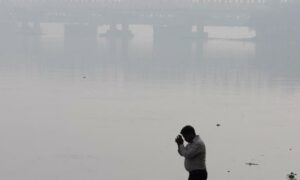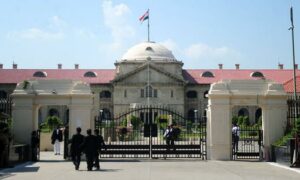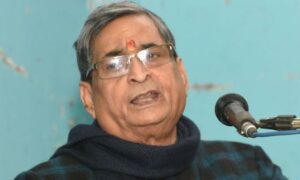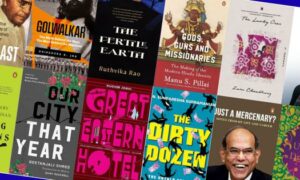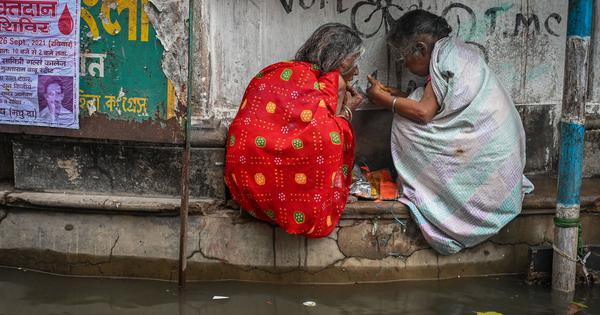
The government may continue to be in denial. But two facts are incontrovertible.
First, that India lost in the Covid pandemic more people than any other country in the world. And second – even more tragically and culpably – that had India put in place a robust system of public healthcare, a vast number of these lives could have been saved.
In the shadow of this mega-tragedy of many million preventable Covid deaths, I reflect a lot about what governments around the world have done, and not done, and must do, to assure health care reaches, with dignity, people who are in greatest need of care.
This thinking is informed in small part by my own learnings around public health gathered in my life’s journey, some of which I share here. I do so in humility, not because my insights are remarkable, but because of what I learned about the enormous public culpability of India’s inequalities. I bore witness to its colossal costs in human suffering. I write also because of my recurring epiphany of how justice and kindness are so closely intertwined.
Living with leprosy, exiled from hope
It is three decades since I was posted consecutively as the district head of six districts in mostly rural and tribal regions of the central Indian states of Chhattisgarh and Madhya Pradesh.
Something that profoundly touched my life and worldview from the start of my public career was the brutal and comprehensive societal expulsion of people living with leprosy. In the 1980s, the number of leprosy patients worldwide was over five million. Around half of these were in India, many of them indigenous people in the impoverished forested regions of central India where I was posted.
It is customary for people making demands from the local government to arrive at the offices of senior officials raising slogans in spirited processions. I had resolved from before I joined my first posting that in any such public demonstration and agitation, I would invite them into my office and listen to them with attention and respect. I would do so to underline that we were not adversaries and that I was not their master but their public servant.
My first posting was in a subdivision called Barwani. I was 27. The procession that arrived outside my office one morning was strikingly different from any that I had encountered up to then in my early months. It was a motley gathering of “burnt-out” leprosy patients, led by a communist school teacher. I say “burnt-out” echoing the title of Graham Greene’s classic novel about a leprosy colony in the upper reaches of the Congo river – A Burnt-Out Case. These are people who were infected with leprosy, people who display signs of the terrifying consequences of this infection – dreaded for millennia – such as discoloured skin, damaged eyes, broken noses and stumps in the place of fingers and toes.
When I sat with them in my office, I found their demands were heartbreakingly modest. It was a time when it was still not uncommon for many towns and cities to have savagely segregated settlements for people with leprosy in their outer periphery. Exiled to an unsanitary patch of land outside the periphery of the town, unserved by any public services, all they sought for their shabby neighbourhood was a drinking water point, some drainage for the lowland swamp which they inhabited and possibly some street lighting. I promised that I would ensure these. But I added that I would love to visit them in their homes.
My visit to their colony – where I kept returning – revealed to me a people more ferociously ostracised than any whom I have met before or since. Their monumental tragedy was that although their infection was entirely curable, it contained within it the unbearable burdens of millennia of brutal stigma and prejudice. The result of this was that the moment their infection was detected and known, they would be cast away even by those they loved the most – their parents, their spouses, their children. They would be banished from their homes and their villages. They would scour for food in waste dumps and ultimately find their way to a shabby ghetto of women, men and children who had similarly been expelled from home and family because of their infection with leprosy. There they would join a new community of exiles, often find a new partner and start a new family of the ostracised. But they would be mercilessly and violently despised by the town residents. So would their children. None would give them work. None would admit their children in schools. To survive, they would line the streets all day, seeking alms by displaying their deformed limbs and sores to despising eyes. Some coins were thrown at them from a distance.
I recalled a slogan veteran social worker Baba Amte – for me a lifelong inspiration – had raised during his landmark work with leprosy patients: I do not want your charity. I only want a chance. I asked the residents of the leprosy colony one evening who among them wished to give up begging and find dignified work. They immediately all raised their damaged hands and this, for me, lit up the skyline. I brought together a band of compassionate Barwani residents to work with me to help organise for them the “chance” that Baba Amte iridescently spoke of.
We brought together for them very modest but clean housing, employment in weaving and brick making, a child care centre, admission in schools and a local clinic. We called their new settlement Asha Gram, or a Village of Hope. For decades after my transfer from Barwani, I would return to Asha Gram with my family to celebrate Diwali or the new year with them in friendship and to watch with wonder and admiration as they built dignity and hope from the ravages and ruins of their past lives.
After this, in every district I worked, I sought out the inevitable leprosy settlement and tried to help them escape the dark despair and degradation to which they had been banished by the stigma of their ailment. Many Sunday mornings, my routine was to go to the leprosy colony with my daughter in my arms and join the residents for a meal, as my daughter played with their children. Some lifelong friendships emerged.
I also educated myself more about the ancient terrifying malady of leprosy, and the Christian Medical College Vellore, which had done pioneering work in leprosy, became a place of pilgrimage for me. I learned from them that it was not the leprosy bacteria that caused the deformities that repelled the world. These were only the consequence of the bacteria attacking the nerves, which anaesthetised their limbs. Because they felt no pain, they would let their limbs fester until their fingers or toes broke or fell off. I learned from them that perhaps nature’s greatest gift to humans was pain. It is only because we experience pain that we take steps to protect ourselves and do all that we can to heal.
I learned from the monumental and entirely avoidable tragedy of every one of their lives how dangerous stigma is. If diagnosed early, treatment for only a year is enough to fully cure the infection, and if detected in time, their limbs would not get anaesthetised, so no deformities would occur. And if there is full cure and no deformities, they would not be expelled from their families, their communities, from schools and work. No outsider would even know that they had leprosy. But they would dread these outcomes so much that they would cower and hide their symptoms and avoid seeking a cure, until the deformities actually set in. And then the abandonment, the derision, the scorn that they dreaded would become their fate.
The central lesson I learned was that their illness was not the bacteria; it was uninformed societal prejudice and hate. Once these are overcome, humankind is able to leave behind at last these horrific tragedies that have come down from centuries. This has begun to happen. The numbers of leprosy infections have reduced to 200,000, although India still reports 60% of the cases.
And this is not just true of leprosy.
TB deaths that should not have happened
Two other maladies preoccupied me over the years. Both of these, not unlike leprosy, are the outcomes of stigma and gross impoverishment.
One of these is tuberculosis.
As part of my duties in the civil service, I was posted for three years as faculty in the training academy in Mussoorie for new recruits to the senior civil service, the diplomatic and police service. At that time, Mussoorie was the last city in India (apart from Kolkata) that still operated rickshaws pulled by running human beings. I was determined to ensure the end of this symbol of human slavery, whatever it took. I encrypted for these three batches of trainees to high public office in the years that I served there, from 1993 to 1996. Many among the recruits were engineers trained in the reputed Indian Institutes of Technology. They helped develop a version of the cycle rickshaw that was safe to operate on the mountain roads. Others volunteered to go to the remote villages in the mountains from where they migrated to understand the depths of impoverishment from which they emerged. Some volunteered to paint and refurbish their shelters where they slept.
Among the trainee civil servants, diplomats and police persons were also trained doctors. With them, we began to examine the health of the rickshaw pullers and head loaders. We discovered among them worryingly soaring levels of TB infection. I requested the director of the academy, the venerable Dr NC Saxena, to unorthodoxly open the health centre for officer trainees at the academy to the rickshaw pullers and head loaders. He readily consented. It was a proud moment when, for those years, people training to become the country’s leading public servants shared their health centre with the most impoverished workers of the town where they were studying.
The treatment often had dramatic outcomes. Before they entered the health centre, the bodies of many would have shrunk almost to a skeleton. Some were visibly just a few steps away from death. Now, instead, we saw them heal, their bodies fill out again, and they would return to their physically taxing vocations.
This became for me also a preparation ground for a much deeper engagement with TB a decade and a half later among the homeless people on Delhi’s streets.
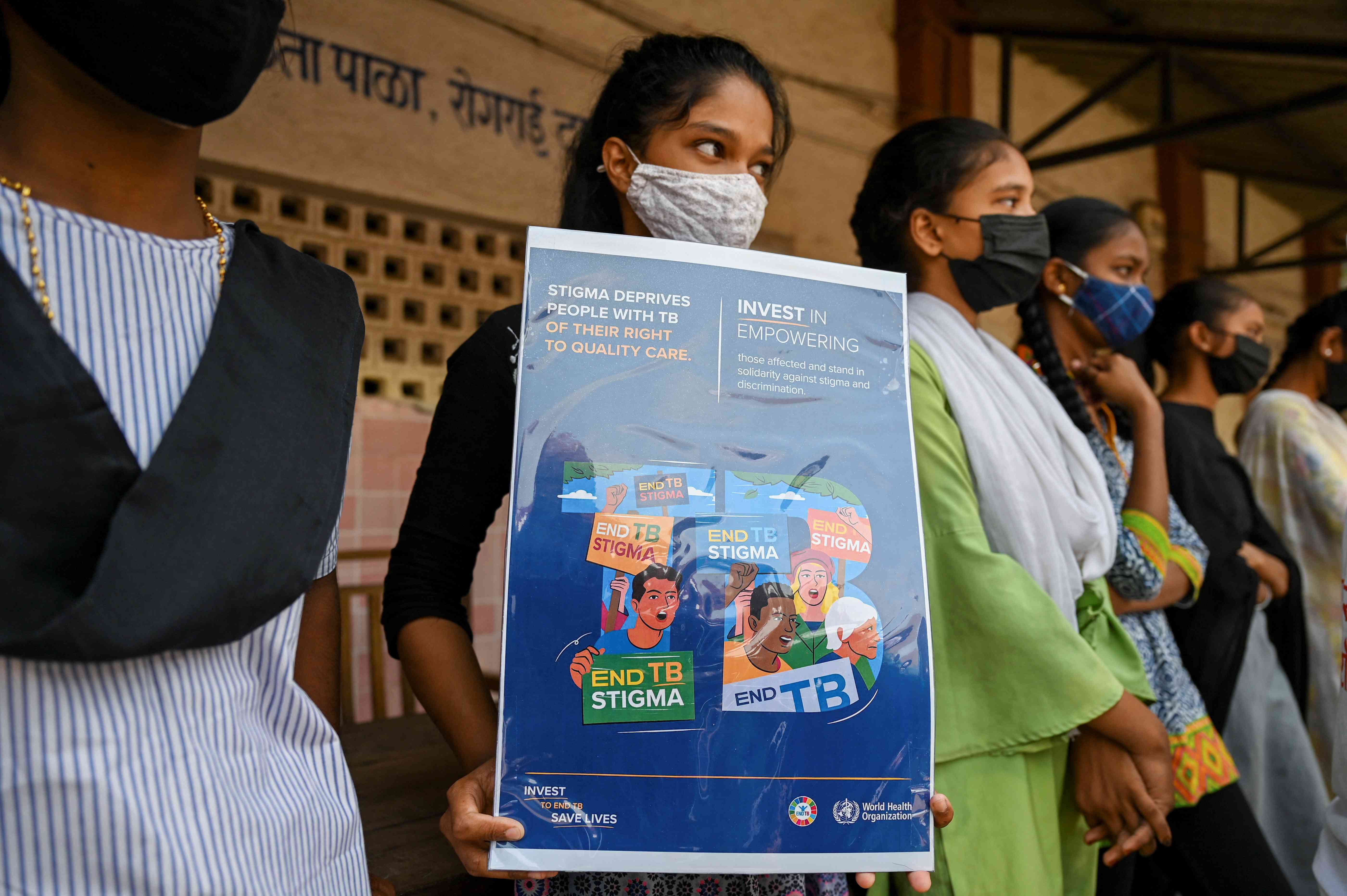
What transpired was that in 2002, after a frenzy of religious violence largely targeting the Muslim minority in Gujarat, I left my position in the civil service in protest, convinced that this was a state-sponsored massacre. I devoted a lot of my time after leaving the government to working with the survivors of hate violence in Gujarat and other parts of the country.
I also started work with rough-sleeping homeless people in Delhi and other cities, and on the questions of hunger and starvation. In the course of this work we learned that rough-sleeping homeless people were five to ten times more at risk of death than people who slept under a roof. We discovered also that perhaps the paramount cause of premature death among homeless people was TB. Friends from the University College of London actively screened the population of homeless men on the banks of the Yamuna River in Delhi and found, to their consternation and alarm, a higher incidence of TB than anything they had encountered anywhere in the world.
Why homeless men in Delhi show higher levels of TB than most other populations in the world, we don’t fully understand, except that TB is classically a malady arising from deep impoverishment. But we understand better the tragic trajectory typical of a homeless person who picks up the TB bacteria. After they contract the ailment, they continue to work until they become too feeble for physical work, meaning they are unable to earn even minimal wages to buy food to stay alive. If somehow, they do succeed in finding a bed in the highly overcrowded TB hospital, after a few days, the doctor would discharge them. After all, the hospital needs to vacate the hospital bed for the next in a long queue of waiting patients. Perhaps the doctor would leave them with terse but well-meaning counsel – “Go home, rest, be regular with your medicine, let your family take care of you, and eat nourishing food.”
But doesn’t the doctor understand? I don’t have a family, I don’t have a home, then what do I do?
I have no option except to return to the streets and die!
Unwilling to accept the incontrovertibility of this reality, we searched desperately for solutions to save the lives of homeless people who are infected with TB. And as with most worthy ideas, the solution in the end was simple. For at least a year after a homeless person is diagnosed with TB, we would create a space of rest, treatment, healing and care that substitutes for the absent family. We called this recovery shelters and opened these shelters in four cities – Delhi, Jaipur, Hyderabad and Patna. There were numerous challenges in these efforts, but the results were immensely heartening. Many homeless people who came to us close to death recovered and walked out a year later, able now to return to the world.
The Healing Power of Kindness
The other ailment with which I engaged in the course of my work, again a malady in which suffering is compounded manifold by stigma, is mental illness.
During my posting in the civil service in Indore, I went to see the mental hospital located there. I could not believe what I saw. It was the 1980s. But this was still in place in this bustling industrial city, the classic “mental asylum” of colonial times, which fortunately today has at last passed into history. Patients were locked up in shocking conditions of indignity, often naked, frequently in chains and with fetters on their feet, wallowing in their excreta and urine, subjected to electric shock therapy and long abandoned by their families. Haunted by their images and their cries, I joined a public interest litigation for the reform of these mental hospitals. The journey inside courts and in the corridors of power was long, but slowly long-term custodialisation in prison-like institutions has come to an end in my country.
As “asylums” are passing into history, there still is the problem of people who were abandoned decades back by their families in these long-term, sometimes lifelong places of custody. However cruel was the custody, these were still sites of some form of elementary protection and care for persons with mental illness who had no one in the world to take care of them. I was invited by the National Human Rights Commission to develop a plan for these people abandoned for decades in mental hospitals. I spoke to them about creating what I called “protected communities”, homes that combine the protection of a long-stay home with the freedom and dignity of an open community.
The Photobook was curated to get mixed groups discussing mental health & lived experiences with a sense of freeness & confidence. To build safe spaces & communities, encourage social mixing, the concept of one world, & equality because that’s who we would like to be as a society. pic.twitter.com/8EHmZW56qb
— The Banyan (@banyanbalm) May 9, 2024
It was a magnificent organisation working with homeless mentally ill persons called Banyan, in Chennai, led by the spirited and charismatic Vandana Gopikumar, which finally implemented this model of a protected community. Banyan rescues homeless mentally ill women from the streets in Chennai. Once in care, many remember after years on the streets who they are and are welcomed back by their families. But several others remain abandoned. Unwilling to confine them in long-stay institutions, Banyan settled them in “protected communities” in the periphery of Chennai city. The women formed families of care among themselves and went back into the world, to the markets and sometimes for work. The remarkable success of this experiment led Banyan to take the next bold step, of groups of formerly homeless mentally ill people living with trained caregivers in apartments within the open community.
In Asha Gram in Barwani, I invited a psychiatrist, Dr Sudipto Chatterjee, to work on a community-based intervention for people with mental health challenges in the countryside. He relocated himself to Asha Gram and developed a hugely encouraging programme of training young people from the surrounding villages to identify and assist patients and families struggling with mental illness. Work on these lines on a much larger scale is being undertaken by an outstanding organisation called Sangath.
I learned a lot also from the work of another association called Iswari Sankalpa. In the dusty, crowded streets of the Kolkata metropolis, Iswari Sankalpa has crafted a unique way of working with homeless, abandoned, mentally ill persons who have no family. Its story of healing and justice through the kindness of ordinary people is very close to my heart.
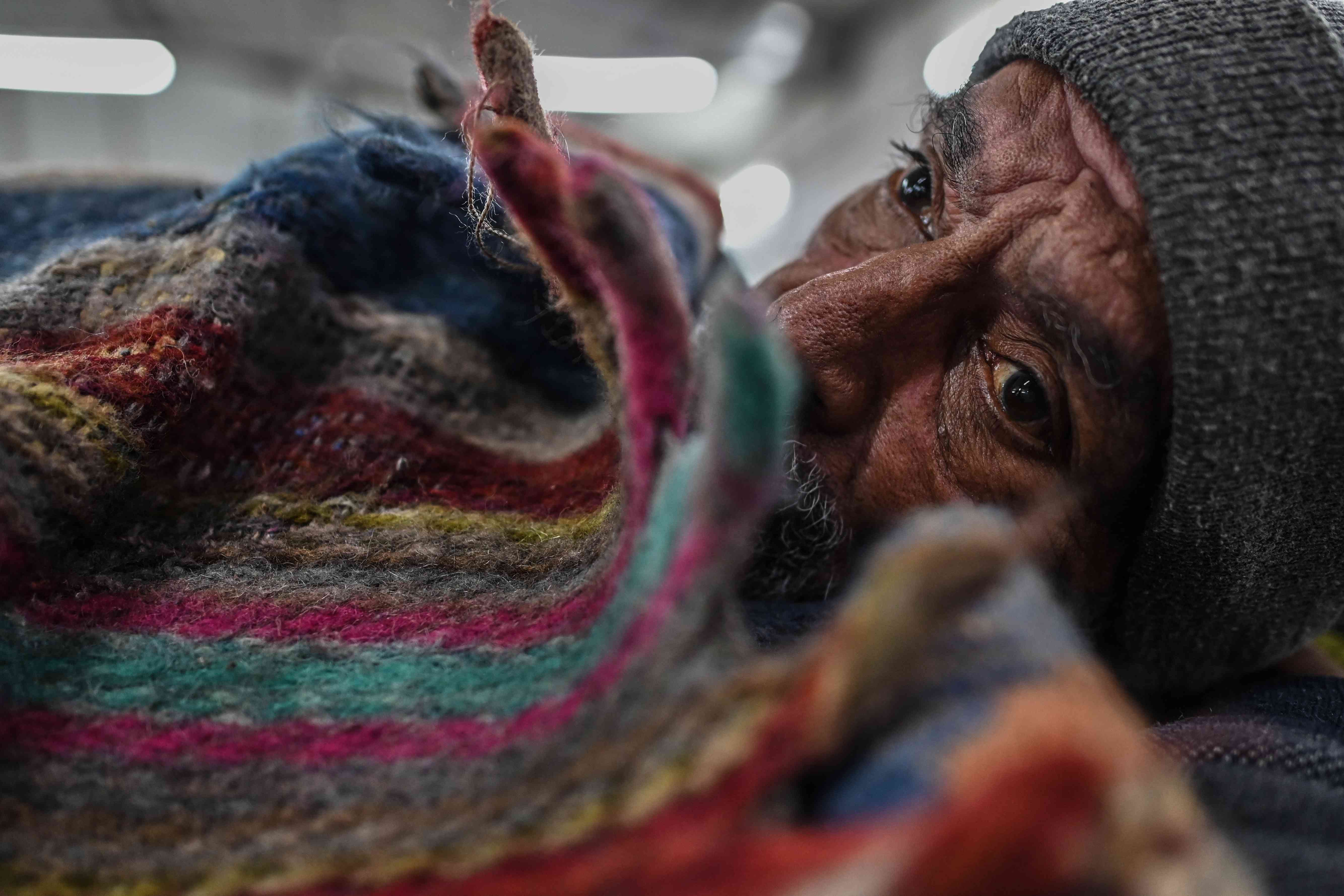
Men or women perched on a waste dump. Covered with grime. Matted, unkempt hair. Nearly naked. Name forgotten. Family forgotten. Muttering inscrutable words. Wandering aimlessly. Solitary. Profoundly lost to the world. We see many such people in the cities we inhabit but turn away. Iswari Sankalpa decided not to.
Today medical science still has not found a cure for severe psychoses, but within a few weeks, medicines can control nearly all one’s debilitating symptoms, limiting confusions and the chances of self-harm. But who would provide these medicines daily to homeless mentally ill patients who have no one in the world? The audacious answer which Ishwari Sankalpa proposed was that surely there are kind people in every community, who, if identified and educated, could become proxy families of these lost and forgotten souls. Their workers first surveyed the city and found 466 such homeless psychotic patients. They also found that homeless mentally ill people often have a sense of belonging, such as to a particular stretch of pavement. Eight fine young men and women then set about on an unusual quest for people of kindness in these stretches frequented by each of these patients. They soon affirmed that, indeed, there is no shortage of compassionate people. They found them mostly among working class street vendors, but a few even among the middle classes.
A homeless, fierce-looking man in his 30s, in tattered clothes with long tangled hair and beard, unwashed body and malnourished frame restlessly roamed Bijon Setu, the flyover near Ballygunge Railway Station. When field worker Swapan initially approached him, he refused even to speak to him or accept food or water from his hands. It took Swapan steady and gentle persistence over several weeks to win his trust. Finally, he agreed to let Swapan take him to their psychiatrist, who diagnosed him with schizophrenia. Swapan then looked around for willing caregivers. He found them in Sunil, who operates a soft-drinks vending stall, and Kanan Mondal, an ageing widow selling tea under the flyover. Both agreed to help the man. The street barber agreed to cut his hair.
In absence of a name, he came to be called Bijon after the flyover, which was his chosen roaming ground. He gradually accepted medicines, hygiene care, food and counselling therapy and slowly started regaining his memory from his volunteer caregivers Swapan, Sunil Babu and Kanak Mashi, who were street vendors. He remembered his real name to be Mohammed Asif Iqbal and that he lived in his maternal uncle’s home in Rajabazar. A visit to his home revealed Bijon’s melancholy past. He lost his mother at an early age and was abandoned in his uncle’s home by his father. Uncared for, he befriended local boys who initiated him into hard drugs. This aggravated further his mental health distress. He was beaten and berated by neighbours and family members and once arrested by the police.
When I met him some months later, I found Bijon clean, shaven and calm. He still lived at the flyover, as he was unwilling to return home. His memories of abuse and neglect haunted him. He had grown to like and trust his new friends Swapan, Sunil Babu and Kanak Mashi. The afternoon I met him, I found him sitting with them between their stalls. He said to me that he was due to meet another friend. It turned out that a volunteer, Anirban, employed in an IT company nearby, had offered to visit him during his lunch-break every day. Anirban arrived soon after. In his hands was a packed box of biryani, which he brought to share with Bijon.
I met another caregiver, 18-year-old Sanjay, a pavement tea-seller in the busy commercial area of Dhakuria. A middle-aged mentally ill man roamed his pavement, and Sanjay agreed to give him medicines with his tea twice a day. As he recovered, again he refused to return to his home. Sanjay spoke to an acquaintance who hires out cycle-rickshaws to rent a rickshaw to Bapida, as he called his new friend. The rickshaw-owner was doubtful. What if he damaged the rickshaw? However, Sanjay stood guarantee for him and had to mollify the owner for early damages to the rickshaw. But in time, Bapida settled down. He drinks tea with Sanjay and sleeps on the pavement near his hand-cart at night. I spoke with Sanjay while he was boiling and pouring out steaming tea expertly to his many customers. I asked him why he did what he did.
He smiled a little, then only said, “Bhalo lage.” I just like doing this.
I recall Mother Teresa’s words. “Not all of us can do great things. But all of us can do small things with great love.”
Unmarked deaths in distant forest lands
During my years at the head of the administration of thickly forested districts in central India with large tribal communities during the 1980s, I frequently encountered an immensely disturbing public health challenge before which we found ourselves helpless.
The challenge was that periodically we would get news that tens, sometimes even more, of people had died in some remote village. Typically, the news would reach us days later. Communication in the vast north, east and central Indian countryside was still poorly developed, more so in forested tribal regions. We would drop anything we were doing and rush to the village. We would find that people died because of drinking foul water, eating rotting meat or from malaria.
The immense frustration and helplessness I would experience every time this happened was because each of these deaths were so easily prevented, and yet we seemed so helpless to prevent them. All that these ailments required was maybe some oral rehydration salts, some testing for malaria, some dysentery or malaria tablets and some cautioning against drinking dirty water, such as when an animal might have died and its corpse was left to rot in the same pond from which the community draws water to drink. There were other deaths due to unsafe child delivery or because both mother and child were not vaccinated.
I got the opportunity in the years after I left the civil service to participate in what was an extraordinarily ambitious but ultimately substantially successful operation to greatly reduce the numbers of such tragically preventable deaths.
Our approach was inspired by the experiments of pioneers of community medicine like Ranjikant and Mabelle Arole, and Abhay and Rani Bang. Their work was based on operationalising the principle of placing people’s health in people’s hands. They recognised that at least 90% of people’s health disorders do not require the intervention of doctors. For this, they resort to community health education and nurture people’s own agency to prevent and treat health challenges. They would work through community health workers, mostly women, who played multiple public health roles. They advised the community on matters like the imperative for clean water and sanitation. They worked toward ensuring safe delivery, ante- and post-natal check-ups and would advise breastfeeding and healthy nutrition for the child and the mother. The health workers were also trained in home-based neonatal care, in promoting women’s health beyond maternal health and in the prevention of epidemics with simple devices like insecticide-coated mosquito nets.
This globally celebrated work focused mainly on small pockets of villages. Our ambition for the state of Chhattisgarh was, at that time, audacious. Could we scale up this model of placing people’s health in people’s hands, tested in small clusters of villages, to the entire state of Chhattisgarh? This would require recruiting and training women community health workers in every one of an estimated 70,000 hamlets in the state.
Fortunately, the chief minister bought into this plan. He invited me to chair the effort, which I did for 10 years, even after the government changed. Leading public health practitioner T Sudararaman consented to relocate from his home in Pondicherry to be the chief executive of this effort. We called the program Mitanin, which in the Chhattisgarhi language means friend. There were many challenges, of massive scale, the dispersal of populations in clusters of houses unreached by any road, and the reality that many of the women community health workers were unlettered. But the programme still got fully off the ground. The results far exceeded our expectations. Key indicators of public health, like child and maternal mortality, showed marked improvement in a much shorter time than we could have expected. This acted as a kind of pilot for the nationwide program of women community health workers called ASHAs.
Reaching health care to the urban poor
I was invited by Keshav Desiraju, the charismatic secretary of health in the previous Indian government, prior to the Bharatiya Janata Party government led by Narendra Modi, to head a committee to advise the government about ways to make public health services reach the urban poor. I invited a number of the country’s leading progressive public health professionals to participate in this effort, and most of them generously agreed. We worked hard, agonised, argued and travelled extensively to produce our report in just a few months. However, the government fell before it had the chance to consider our findings and recommendations.
Perhaps the most unexpected realisation from this exercise was that the urban working and destitute poor are even more underserved by public health services than the rural poor. The Indian countryside, at least in principle, is served by primary health centres. It is another matter that these are highly under budgeted and frequently have massive gaps in staffing, equipment and medicines. But most of urban India has no kind of primary health centres. Tertiary and super-tertiary public hospitals are overcrowded to breaking capacity, and many working poor city residents spend large sums of money on untrained private health providers because of this unconscionable gaping hole in public health provisioning.
A second significant learning from this was the mind-boggling diversity of the urban poor population, each having varying implications for their health challenges. First are mammoth residential variations. Some people who are completely unhoused, sleeping in city pavements, parks, parking centres, in Hume pipes or on the banks of sewage-filled open drains. Some live in homeless shelters. Some have houses on pavements. Some are in slum shanties with houses built with plastic and waste and with no public services. Some are in slums regularised by the government and therefore with some elementary public services like common taps. Some live in crowded, airless old inner-city housing.
There is likewise enormous diversity in the survival livelihoods of urban impoverished men and women. What binds the large mass of working people is that their work is casual, uncertain, unhealthy, informal, insecure and unprotected, with no social and health protection. In addition, different vocations have diverse health hazards.
For instance, many women work from within the few square metres of their crowded slum homes, deploying the labour also of their children and old parents to earn just a small fraction of the statutory minimum wage. Men of disadvantaged castes enter sewers to clean them and sometimes die from the gases emitted by the sewage, drowning in human excreta. Head loaders suffer from formidable neck and spinal stresses. Construction workers on dizzyingly high-rise buildings work hundreds of metres above the ground with no safety protections. Sex work is entirely unprotected. Waste pickers scour through waste dumps, exposed to myriad deadly infections. I could go on.

Understanding starvation
I learned a great deal about the sombre toll taken by hunger and starvation during the dozen years that I worked as the Special Commissioner of the Supreme Court of India. A leading human rights collective, the People’s Union of Civil Liberties, filed a landmark public interest petition in the Supreme Court seeking the fundamental right to food and nutrition, pointing to a situation in which every second child in the country was malnourished and more than 60 million tonnes of food grain were stored in government warehouses, much of this unused. The Supreme Court treated this petition favourably. Until parliament legislated a statutory right to food, the Supreme Court would oversee the enforcement of this right through two commissioners of the country’s highest court. I was one of these two.
For twelve years, I travelled to far corners of the country investigating claims of starvation. Each of these journeys were harrowing. In villages in forest interiors, I would see women and children so slight in weight that it seemed a wonder that they held on to life. Women would speak of the agony of telling her child that despite her best efforts, there would be some nights every month when she would not be able to put any food on their plates. I would see myriad children tragically stolen from their parents to ordinary fevers and diarrhoea because their bodies did not have the strength to offer any fight.
I learned how people who routinely live with hunger cope. First, they resolutely, harshly teach their bodies to crave less and less for food. They force their bodies down from three meals to two, then two meals to one. Second, each of these communities identifies tubers, grasses or waste like mango kernels that come free and serve to fill their stomachs and appease their gnawing hunger. I call them pseudo-foods. What they eat has no food value and is often harmful, even poisonous, for the body. They boil these and try to release the poisons, and then they eat what remains. These pseudo-foods do not provide the body any nutrition. Instead, they accumulate harmful toxins in the body.
The third way of coping with routine starvation that I encountered everywhere was what I can only describe as desperate choices. This is when a person puts herself or himself in bondage, or even their child. They pull their child out of school and put her to work. They even, on occasion, sell the child. A woman who had sold her child wept piteously when I met her at her home. “I loved my child so much, that is why I sold her. Don’t you understand? I sold my child because I loved her and wanted her to live.”
Designing India’s food rights law
The previous Indian government also invited me into a council created to advise the prime minister on legislation and policies for people of poverty and social disadvantage.
One of the laws I was called upon to help design was a right to food law. I learned a great deal in the searching, intense, sometimes heated, debates about what the law should include.
I learned, for instance, that there were three ways in which a family could be secured access to sufficient food for an active and healthy life with dignity.
One of these is to grow this food. This would entail defending the rights of farmers, especially small, marginal and tenant farmers, and of fish workers and forest gatherers.
The second is for the family to be able to buy its food requirements. This would require the protection of labour rights of all working people, including women and disabled people.
The third is for the family to receive food, through private charity or state social protection. It was this last that we tried to accomplish through the law we wrote. Some 800 million people – half of urban households and three-fourths of rural households – would be entitled to half their calorie requirements almost free. Some 160 million children would get pre-school feeding, and some 120 million children in government schools would get hot cooked meals.
In scale, this is perhaps the largest social security programme mandated by law in the world. Yet, each year India continues to fall further in the Global Hunger Index, even as India’s economy continues to swell. Even India’s much poorer neighbours, like Nepal and Bangladesh, have overtaken India in the battle with hunger.
I learned that for social rights, the law is important. But it is not enough.
My mother and a homeless woman
In recent years, both my parents died. My mother died in her late 80s, my father when he was 92. Over those years before they passed away, they were in and out of hospitals, sometimes for many years at a stretch. I tried to be always by their side, immensely grateful each time that they recovered enough for a few more years, months, days of life. But one thought would haunt me through all of this.
My parents could afford the surging hospital bills only because of my father’s years in India’s higher civil service and the United Nations. The thought that would not leave me was that if we were poor, there is no way my parents could have lived so long. While I was blessed that they were alive, I was continuously mindful of the cold reality that in my country – and in much of the world – my access to healthcare does not depend on how urgent my need is. It depends instead on how lofty is my privilege.
In positions of authority, as a policy advisor, as a court monitor, as a social worker and as a citizen, this is the lesson I learned again and again.
I think of the homeless mentally ill woman I spoke of earlier. Covered, as I said, with grime. Matted, unkempt hair. Nearly naked. Name forgotten. Family forgotten. Muttering inscrutable words. Wandering aimlessly. Solitary. Profoundly lost to the world.
I long for a world where she has exactly the same chances of life as my mother had, that she is treated in the same hospitals with the same respect, dignity and care where my mother received the healing that added many precious years to her life.
Harsh Mander is a peace and justice worker, writer, teacher who leads the Karwan e Mohabbat, a people’s campaign to fight hate with radical love and solidarity. He teaches part-time at the South Asia Institute, Heidelberg University, and has authored many books, including Partitions of the Heart, Fatal Accidents of Birth and Looking Away.
📰 Crime Today News is proudly sponsored by DRYFRUIT & CO – A Brand by eFabby Global LLC
Design & Developed by Yes Mom Hosting

